Nvidia GeForce GTX 1060 Review > Gainward GTX 1060 GS
Gainward GTX 1060 GS
Just as I was wrapping up my GTX 1060 launch day coverage, Gainward's GTX 1060 Phoenix GS landed on my doorstep. We weren't expecting a partner carte du jour in time for the official GTX 1060 release so nosotros were happy to have the Gainward card on mitt.
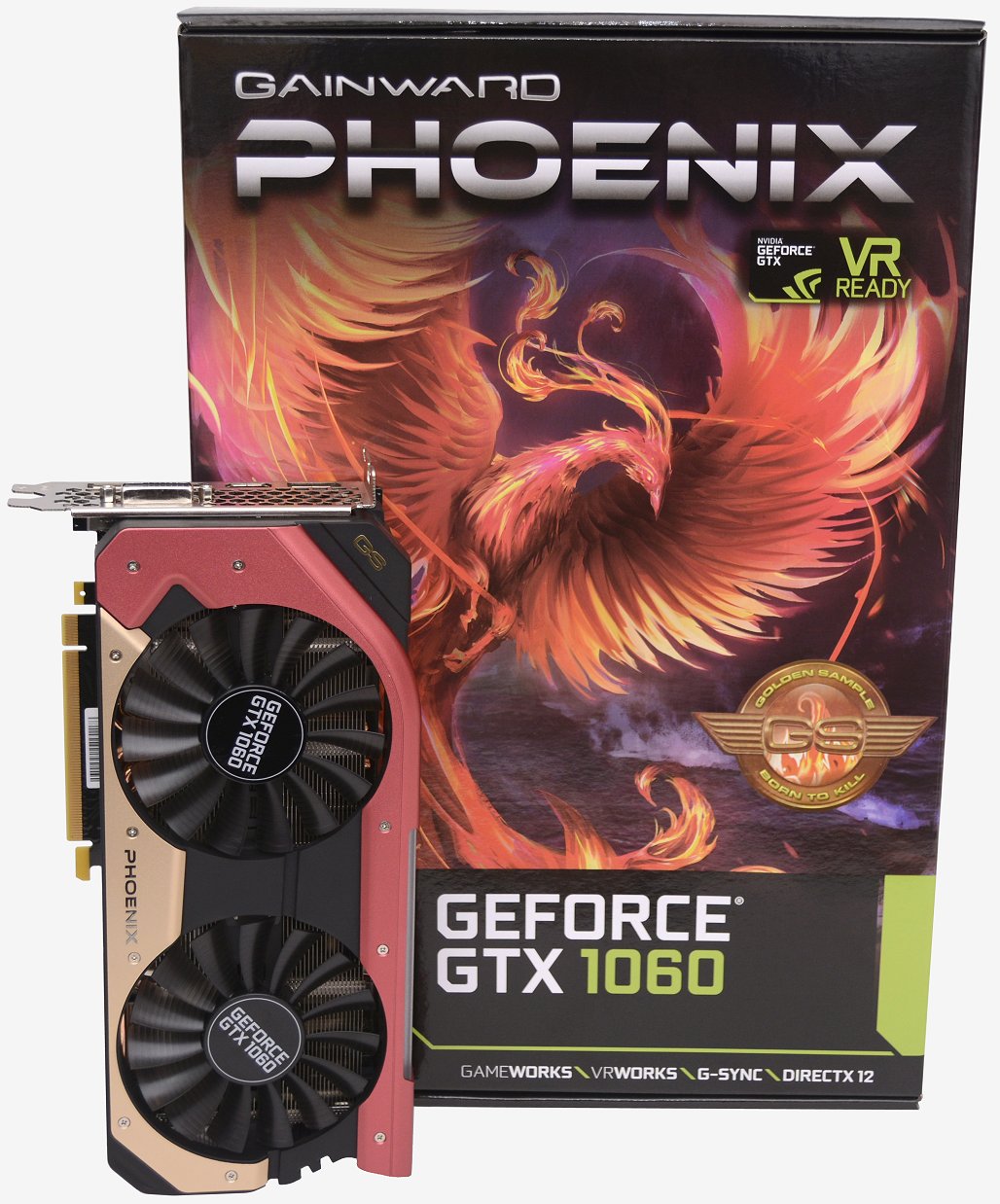
Due to the card's late arrival, we're merely going to update three games with the GTX 1060 Phoenix GS results and we will also include custom overclocking as well as a note on thermals.
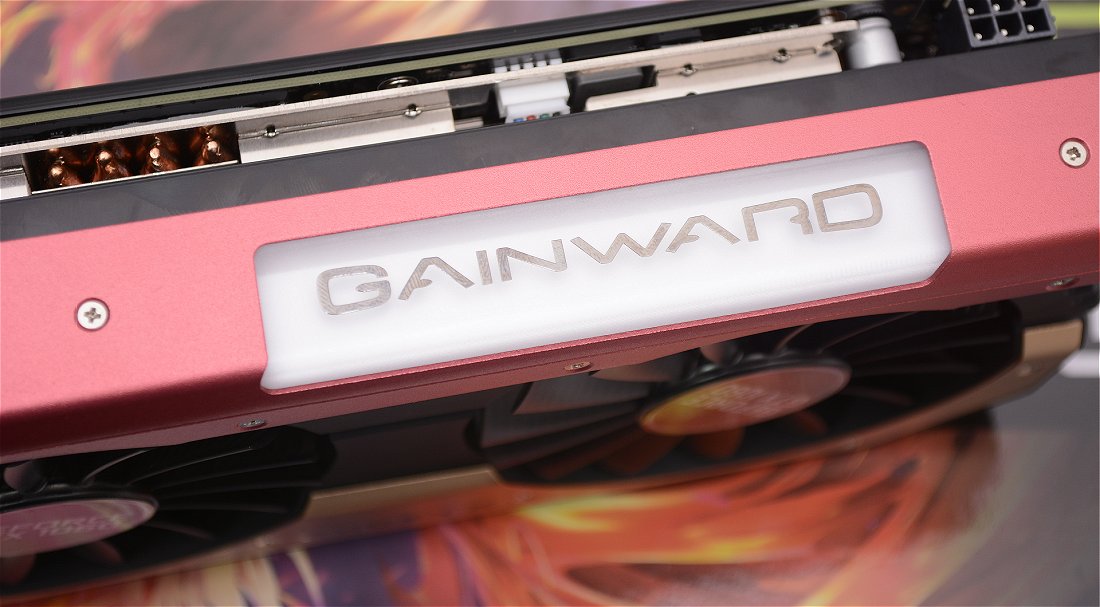
Earlier we get to that let's take a closer expect at the card itself. Like the Founders Edition, the Phoenix GS measures 250mm long. Whereas Nvidia's design stands 110mm alpine the Gainward carte du jour is 123mm tall thanks to the oversized cooler.
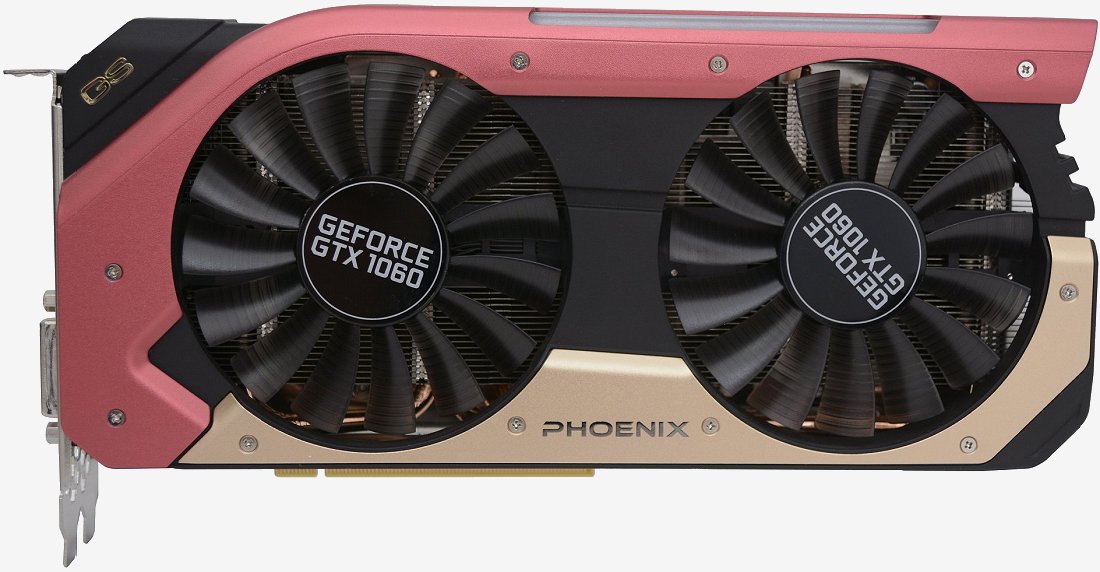
Speaking of which, the cooler has been constructed primarily from plastic but does feature anodized aluminium trimmings. Moving air over the heatsink below are a pair of 90mm fans featuring Gainward's new blade fin design. These fans are extremely quiet, even when the card has been placed nether load for an extended menses.
In full there's 210mm by 73mm at 28mm thick worth of heatsink. Improving efficiency are four 6mm copper heatpipes which connect to a large base of operations plate that too covers the six GDDR5 memory chips every bit well as the VRMs.
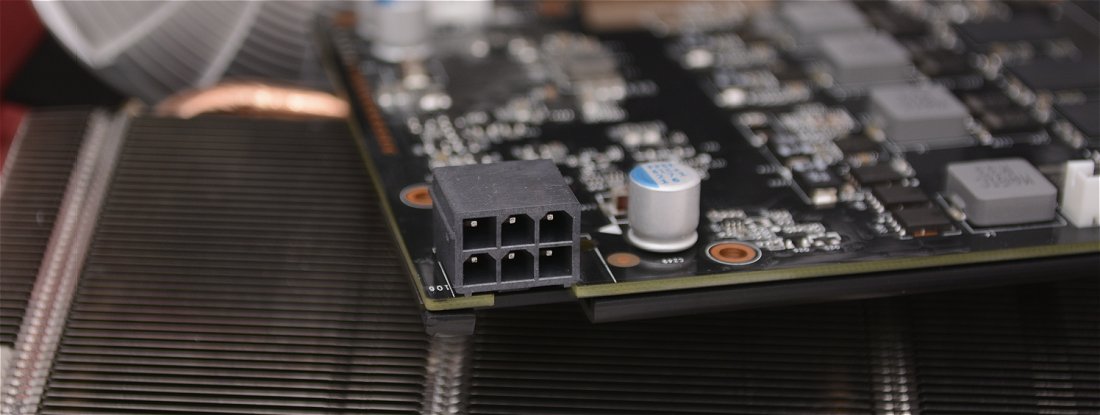
The PCB pattern has been inverse and at present we find a iv+1 power phase design, a slight upgrade. The PCB also stretches the total length of the card so again we find the 6-pin PCIe power connector at the end of the graphics bill of fare. That being the case, no upgrades to the ability input accept been fabricated so in that location'due south nil here that really suggests the Phoenix GS will overclock any better than the Founders Edition graphics card.
Out of the box the Gainward GTX 1060 Phoenix GS comes with a mill overclock. The base clock has been set at 1620MHz which results in a boost clock of 1848MHz. The memory has been left at 2002MHz resulting in a data rate of 8Gbps. That'south an 8% core overclock and nothing on the retentiveness.
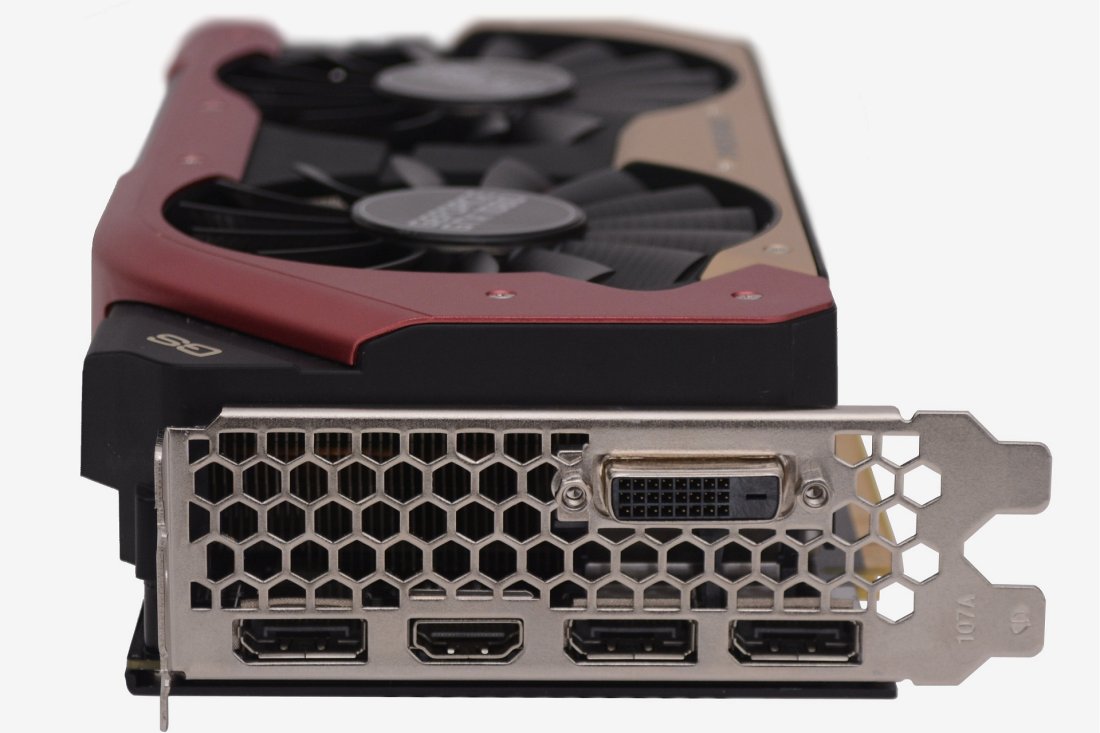
Around the back nosotros find a huge full size dorsum plate protecting the card, though the aluminum plate is pretty deadening in terms of design. The I/O configuration remains standard with a single dual-link DVI output, HDMI 2.0b and iii DisplayPorts.
When it came to overclocking the carte du jour we were able to push the memory up to 2302MHz while the core reached 1745MHz resulting in a boost clock of 1973MHz. All the same, due to the way GPU Boost 3.0 technology works, the GTX 1060 Phoenix GS spent most of its time operating at around 2.1GHz, merely like the Founders Edition. Again, we weren't able to increase the voltage but the ability target was maxed out at 119%.

Interestingly, despite its larger libation, Gainward'south carte operated quite a few degrees hotter than the Founders Edition menu. Role of this was down to the power consumption which was quite a bit higher than the FE card, as yous'll encounter in a moment. First let's take a quick look at a few benchmark results…

Out of the box the Gainward GTX 1060 Phoenix GS was just slightly better than the Founders Edition graphics card. Once overclocked the Phoenix GS was only able to match the Founders Editions 47fps average so non a terribly exciting result.
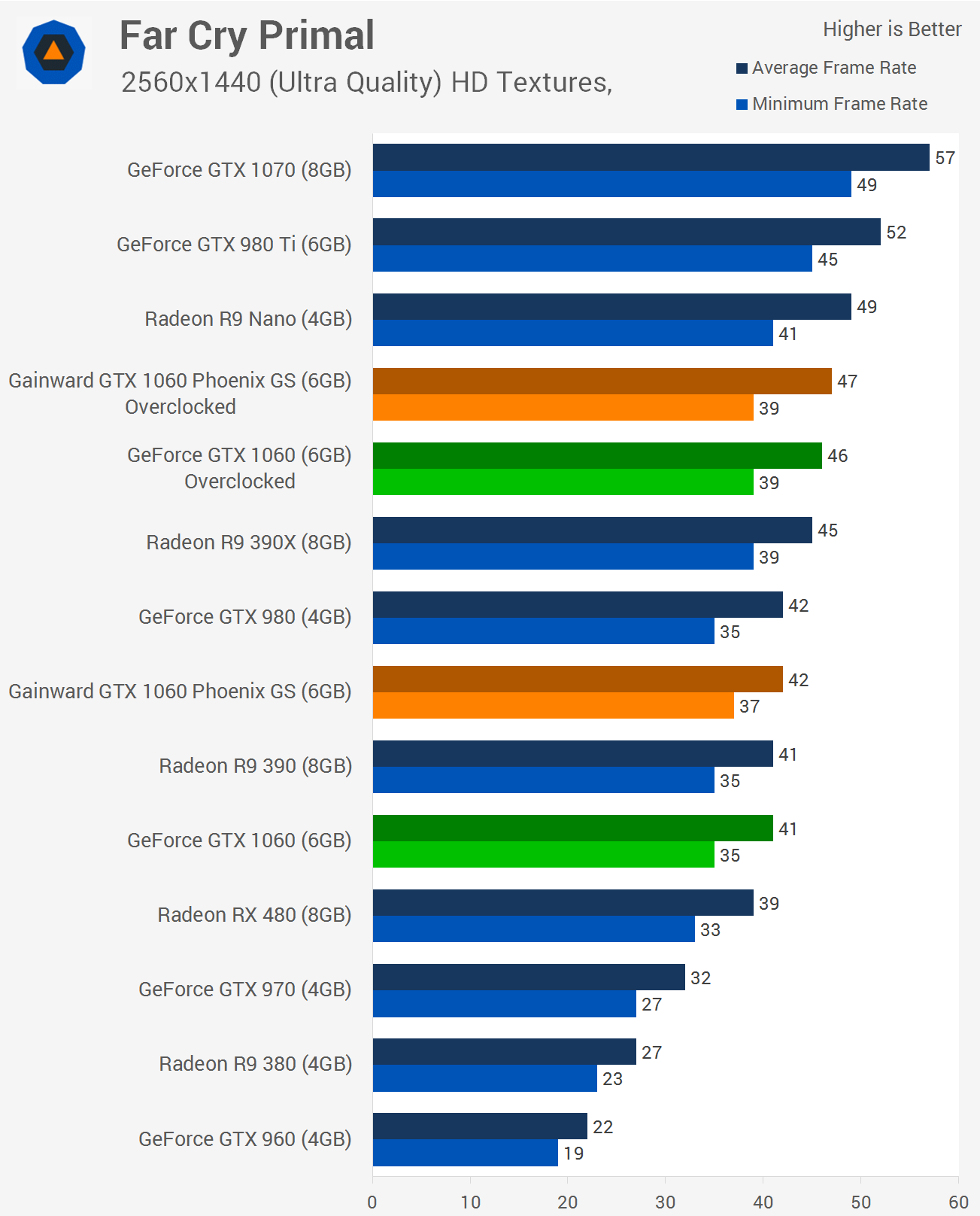
Again the Gainward card was just a frame faster with the factory overclock and fifty-fifty with the maximum custom overclock applied the Phoenix GS pulled just a single frame alee of the Founders Edition.

The concluding game we checked out was Rise of the Tomb Raider and here the Phoenix GS was again but a frame or ii faster than the Founders Edition. This was true when comparing the two out of the box besides as with the maximum stable overclock applied.
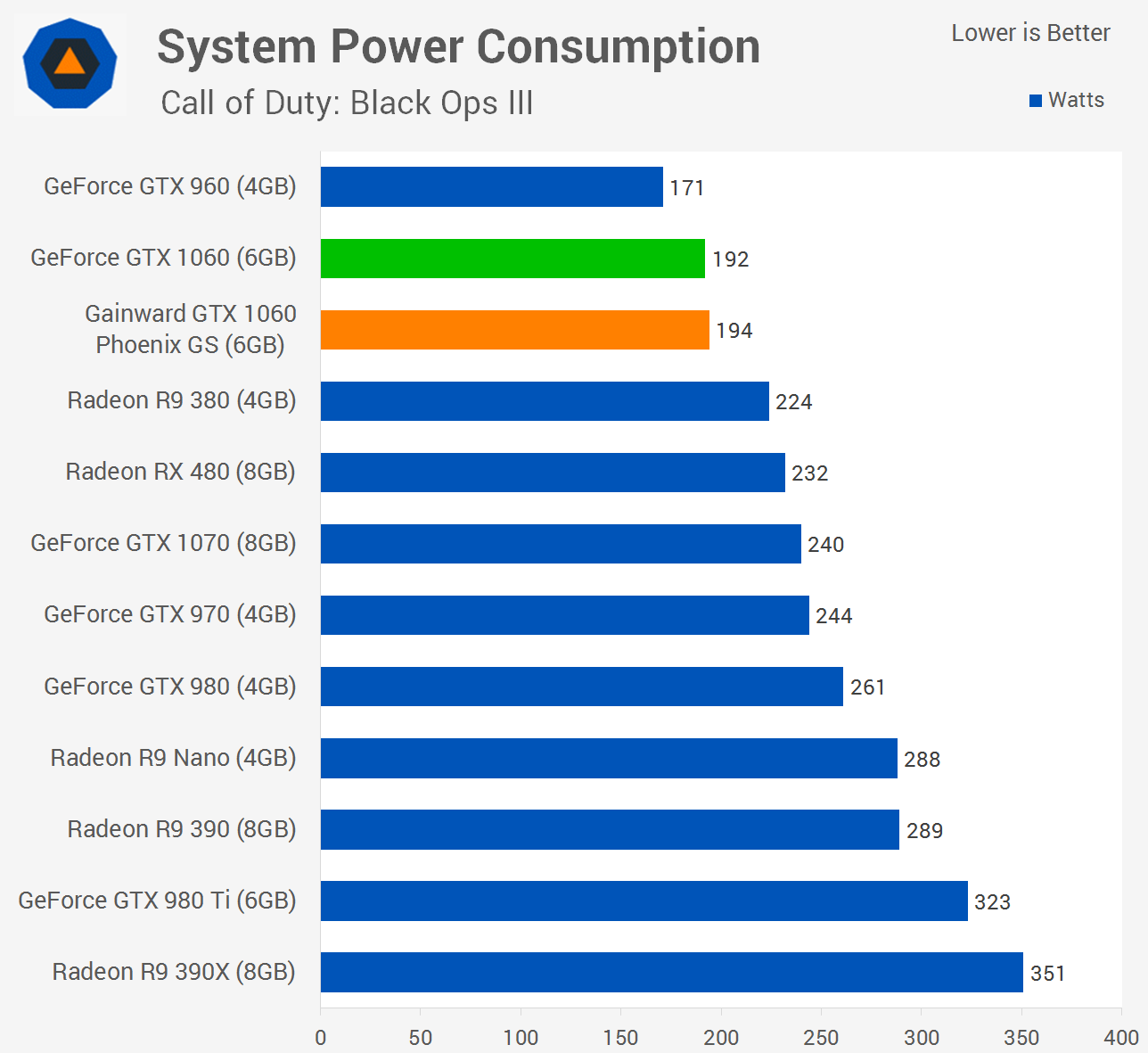
Equally expected, the Gainward GTX Phoenix GS consumed a similar level of ability as the Founders Edition card with the full system consumption reaching only 194 watts in Phone call of Duty Blackness Ops Three.
Considering the cooler is so much larger and that dual fans typically outperform blower style cooler, we were surprised by the thermals. The Phoenix GS ran at 67 degrees, 3 degrees hotter than the Founders Edition bill of fare. In Gainward'south defense we volition say that the GTX 1060 Phoenix GS was most silent, even under full load so that was a huge plus.
Source: https://www.techspot.com/review/1209-nvidia-geforce-gtx-1060/page9.html
Posted by: alvaradoshle1989.blogspot.com


0 Response to "Nvidia GeForce GTX 1060 Review > Gainward GTX 1060 GS"
Post a Comment